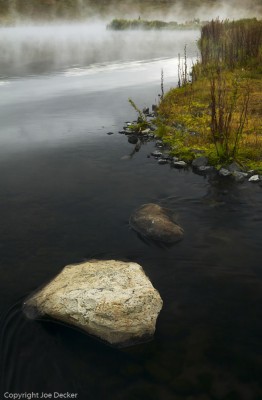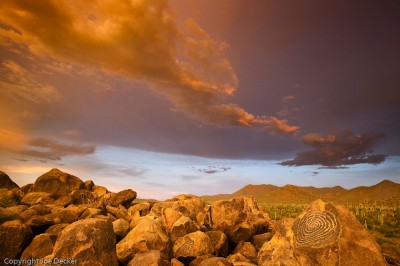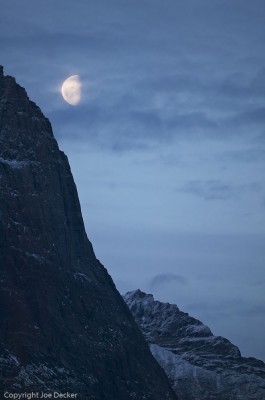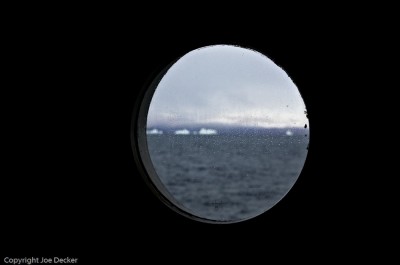If you like this article, you can now get the book! Joe has expanded the “Tuesday Composition” series into an inspiring new ebook on composition, especially for nature photography. Check it out: The Tuesday Composition.
A circle is the reflection of eternity. It has no beginning and it has no end – and if you put several circles over each other, then you get a spiral. –Maynard James Keenan
In previous weeks, we’ve talked a number of times about how the eye tends to follow along a line. We’ve usually talked about this in the context of the eye traveling from one part of an image to another, but circles are another variation on this theme. By bending a line back around to meet itself, we get a circle (or a similar closed curve). The eye tends to follow that circle, tracing around it one or more times, pulling attention both to the circle itself and whatever it encloses.

View to a Chill is an almost trivial example of this; one of the several key elements of the image is the way the eye follows around the edge of that circle. (The lack of contrast outside the circle and the brighter areas inside the circle are two other cooperating factors.)
This idea doesn’t just apply to perfect circles–any sort of enclosed shape, such as the lower-left stone in Stepping Stones, can function in a similar way. However, bent or highly curved areas of the shape, such as the small protrusion on the left of that rock, tend to catch the eye a little bit and interrupt the smooth flow of the eye around the circle. That happens for my eye here, it spends a little more time on that part of the rock than seeing the rock as a whole. On the whole, relatively smooth, round shapes tend to hold the eye a little bit more effectively than bent, broken or irregular ones.

Spirals aren’t truly enclosed; however, compositionally spirals function in a similar manner. Like circles, spirals pull the eye around and around in an area, and in doing so they hold the viewer’s attention in that area for a longer period of time. The spiral glyph in Hohokam Petroglyphs gets a lot of its magic from that principle, the eye gets drawn into the center of the spiral. The closed curve formed by the edges of the rock face that the glyph is on also forms a circle which tends to hold our eye to this part of the image. Of course, the line of bright clouds pointing at the petroglyphs draws our eye there in the first place–but it’s the spiral shape that really helps hold our eyes there.

It took longer than usual to assemble the examples for this week’s column, and in thinking about that I realized that, more often, circles tend to show up as small-to-medium sized elements of my images, things like river stones, or the moon. When shown at small sizes, such as on a computer screen, these elements get small enough visually that they don’t recall. So an element that really does function compositionally as a circle in a 36×24″ print, such as the half moon in Snowy Pinnacles at Dusk, won’t really show as a compelling example on a small computer screen. Having realized this was the case, it then came as no surprise that the first photographer I ever heard mention compositional circles was David Muench, whose large-format work tends towards compositions that reach their pinnacle in large-scale prints. I have a theory that scale, that is, how visually large an image is presented, plays into composition in a number of ways, and I’ll be talking more about that in future columns.

Knut Skjærven
29 Oct 2009Hello
I just found your site. Some of you might take an interest in this blog on visual communication and photography: http://barebonescommunication.wordpress.com/
Many thanks.
Best wishes
Knut Skjærven